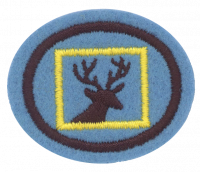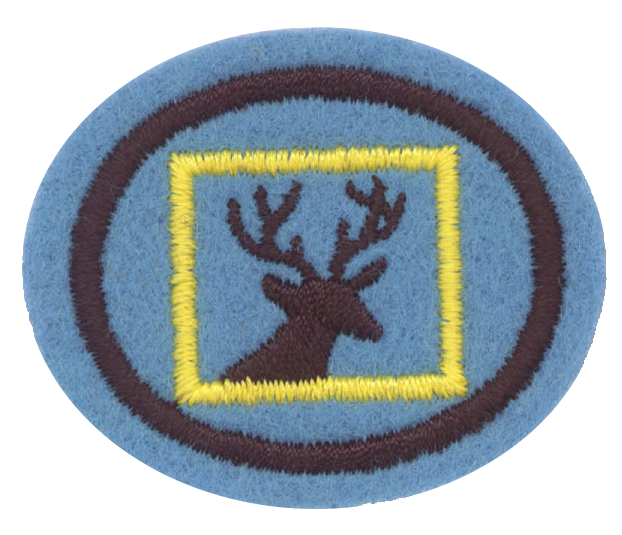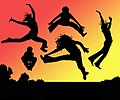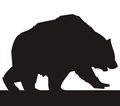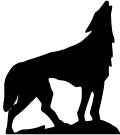Difference between revisions of "AY Honors/Glass Painting/Answer Key/es"
(Created page with "Especialidades JA/Pintura sobre vidrio/Respuestas") |
(Created page with "</noinclude> <!-- 2. Conocer los materiales utilizados en pintura, montaje, colgantes y vasos pintados. --> * Vaso * Pintura ** Pinturas transparentes: permiten que la luz pas...") |
||
| Line 2: | Line 2: | ||
<section begin="Body" /> | <section begin="Body" /> | ||
{{ansreq|page={{#titleparts:{{PAGENAME}}|2|1}}|num=1}} | {{ansreq|page={{#titleparts:{{PAGENAME}}|2|1}}|num=1}} | ||
| − | <noinclude> | + | <noinclude></noinclude> |
| − | </noinclude> | + | <!-- 1. Conocer los colores primarios, los colores secundarios y cómo mezclar los colores primarios para obtener los colores secundarios. --> |
| − | <!-- 1. | ||
| − | |||
| − | |||
| − | + | {{:Adventist Youth Honors Answer Book/Primary_and_secondary_colors/es}} | |
| − | {{:Adventist Youth Honors Answer Book/Primary_and_secondary_colors}} | ||
| − | |||
| − | + | <noinclude></noinclude> | |
| − | <noinclude | ||
| − | |||
{{CloseReq}} <!-- 1 --> | {{CloseReq}} <!-- 1 --> | ||
{{ansreq|page={{#titleparts:{{PAGENAME}}|2|1}}|num=2}} | {{ansreq|page={{#titleparts:{{PAGENAME}}|2|1}}|num=2}} | ||
| − | <noinclude> | + | <noinclude></noinclude> |
| − | </noinclude> | + | <!-- 2. Conocer los materiales utilizados en pintura, montaje, colgantes y vasos pintados. --> |
| − | <!-- 2. | + | * Vaso |
| − | * | + | * Pintura |
| − | * | + | ** Pinturas transparentes: permiten que la luz pase a través de ellas. |
| − | ** | + | ** Pinturas opacas: logran el color deseado, pero no son transparentes. |
| − | ** | + | ** Otros medios para efectos helados, iridiscentes o crepitantes. |
| − | ** | + | * Pincel |
| − | * | + | * Esponjas: se pueden utilizar en lugar de o además de los pinceles. Buenas para si quiere pintar toda una superficie de un solo color. |
| − | * | + | * Alcohol isopropílico: para limpiar el vidrio antes de pintar. ¡No pinte vidrios sucios! |
| − | * | + | * Toalla de papel: también para la limpieza. |
| − | * | + | * Estarcidos adhesivos (opcional) |
| − | * | + | * Patrones: se pueden colocar en el interior de un vaso y luego se puede copiar el diseño (similar al trazado). |
| − | * | + | * Enganches y cuerdas con algún método para adjuntarlos a su obra de arte. |
| − | * | ||
| − | |||
| − | + | <noinclude></noinclude> | |
| − | <noinclude | ||
| − | |||
{{CloseReq}} <!-- 2 --> | {{CloseReq}} <!-- 2 --> | ||
{{ansreq|page={{#titleparts:{{PAGENAME}}|2|1}}|num=3}} | {{ansreq|page={{#titleparts:{{PAGENAME}}|2|1}}|num=3}} | ||
| − | <noinclude> | + | <noinclude></noinclude> |
| − | </noinclude> | + | <!-- 3. Realizar y exhibir un vidrio pintado para cada uno de los siguientes diseños: animales, flores o un paisaje marino o terrestre. --> |
| − | <!-- 3. | ||
| − | |||
| − | |||
| − | + | {{clear}} | |
| − | |||
| − | |||
| − | + | {{clear}} | |
| − | |||
| − | |||
<div lang="en" dir="ltr" class="mw-content-ltr"> | <div lang="en" dir="ltr" class="mw-content-ltr"> | ||
Revision as of 12:26, 28 April 2021
Nivel de destreza
1
Año
1938
Version
22.12.2025
Autoridad de aprobación
Asociación General
1
2
- Vaso
- Pintura
- Pinturas transparentes: permiten que la luz pase a través de ellas.
- Pinturas opacas: logran el color deseado, pero no son transparentes.
- Otros medios para efectos helados, iridiscentes o crepitantes.
- Pincel
- Esponjas: se pueden utilizar en lugar de o además de los pinceles. Buenas para si quiere pintar toda una superficie de un solo color.
- Alcohol isopropílico: para limpiar el vidrio antes de pintar. ¡No pinte vidrios sucios!
- Toalla de papel: también para la limpieza.
- Estarcidos adhesivos (opcional)
- Patrones: se pueden colocar en el interior de un vaso y luego se puede copiar el diseño (similar al trazado).
- Enganches y cuerdas con algún método para adjuntarlos a su obra de arte.
3
If using a picture frame, a background can be cut from matte or poster board, and the paint can be applied on the reverse side of the glass.
When painting on the reverse side of the glass, the painting can be realistic or abstract. Realistic reverse paintings are more challenging to create as one must, for example, in painting a face, to put the pupil of an eye on the glass before the iris, exactly the opposite of normal painting. If this is neglected the artist will not be able to correct the error as he will not get in between the glass and the paint already applied. In other words, you must work from the foreground to the background rather than painting the back ground and then laying a foreground over it.
4
A silhouette is a view of an object or scene consisting of the outline and a featureless interior, with the silhouetted object usually being black. The term was initially applied in the 18th century to portraits or other pictorial representations cut from thin black card.
The term has been extended to describe the sight or image of a person, object or scene that is backlit, and appears dark against a lighter background.
To make a silhouette on glass, it is easiest to start with a picture frame. Place a reverse-image pattern behind the glass and color it with opaque black paint on the reverse side of the glass. Allow this to dry, and then (if desired) paint a background over the silhouette using colors. As long as the original layer of black paint is dry, it will not be affected by the background you lay over it. The finished product should be viewed from the front.
The background is not necessary, or it can be a printed design on a piece of stock card or paper that lies behind the glass in a frame. The silhouette can be the main feature of the piece, or it can be an accent if placed off to the side, in a corner, or along an edge of the glass.
5
Decide where on the mirror you would like to paint the design. Do you want it in the center? In a corner? Once you decided, flip the mirror over and use masking tape to mask around the area you wish to paint. Remember that this is a reverse-image, so if you wanted your picture to appear on the right, you will have to mark the area on the left. Once the area is masked, apply some paint stripper to the area within the tape. Read and follow the directions for the paint stripper. It will tell you how long to let it set before scraping. It will also tell you what kind of gloves you will need to protect your skin.
Once the paint stripper has done its work, you should be able to scrape most of the paint off and rinse the mirror. If you can't get it all scraped off, use steel wool to get that last little bit.
With the mirror backing removed, you should now have a transparent area in which to paint your picture.
History
Reverse painting on glass is an art form consisting of applying paint to a piece of glass and then viewing the image by turning the glass over and looking through the glass at the image.
This art form has been around for many years. A number of clock faces were created using this technique in the early to mid 1800s, but it started to become popular again in the late 1990s. The painting can be realistic or abstract. Realistic reverse paintings are more challenging to create as one must, for example, in painting a face, to put the pupil of an eye on the glass before the iris, exactly the opposite of normal painting. If this is neglected the artist will not be able to correct the error as he will not get in between the glass and the paint already applied. No such care need be taken with the abstract form, but with this form you do not have a good idea what the piece will look like until you are finished painting it. This process is not like stained or leaded glass work in that it is not intended to hang in a window with light coming through the piece. Hanging on a wall, framed or unframed, with a lot of light directed towards the piece provides best viewing.
